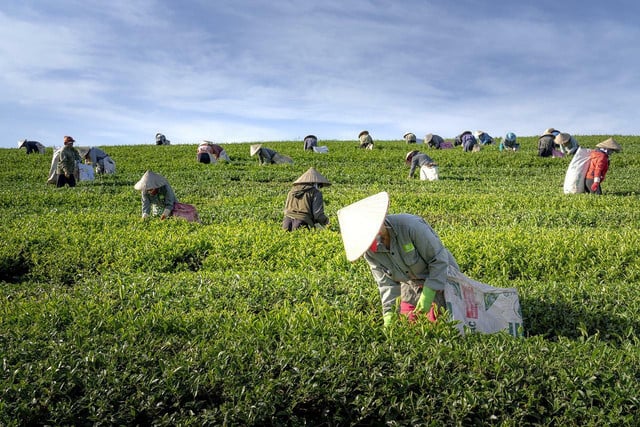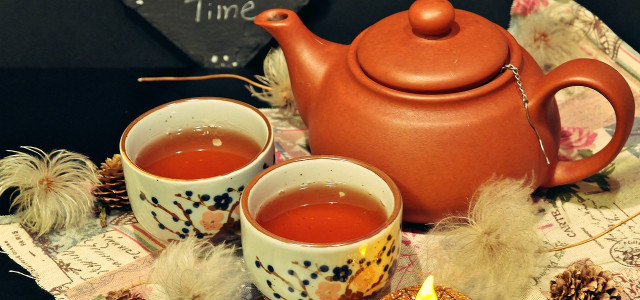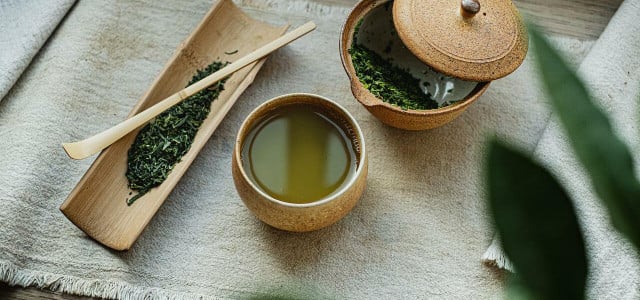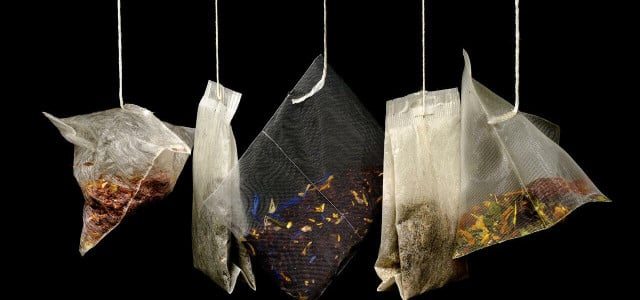Yes, tea decaffeination is a thing. We'll explain the impact of the four commonly used methods on the tea's flavor, and suggest some tasty and sustainable caffeine-free alternatives.
Though even the most caffeinated black tea still has less caffeine than coffee, all tea leaves contain at least some caffeine. Black tea contains the most, followed by oolong, green, and white. While decaf tea may seem like an attractive solution, the tea decaffeination process often impacts flavor and the environment. Tea decaffeination follows the same methods as coffee decaffeination. The type of method used depends not on the type of tea, for example whether it’s white or green tea, but varies from company to company:
- Solvent Based Method: The tea leaves are directly bathed in chemical solvents that bind to the caffeine, and then are removed through evaporation. The two most commonly used solvents are methylene chloride (used infrequently) and ethyl acetate (used commonly for teabags), both of which are toxic in large quantities, but classified as safe in trace amounts by the FDA. Both methods are said to retain the original flavor, but also result in solvent waste. Solvent waste isn’t an issue with ethyl acetate, since it is found naturally in fruit (teas made this way are dubbed “naturally decaffeinated”). More concerning is methylene chloride (which is linked to ozone depletion and must be carefully stored until it naturally breaks down.
- Carbon Dioxide Method: This method is used primarily for large batches of loose-leaf tea and involves pressure cooking the tea leaves in CO2 until the CO2 liquifies and binds to the caffeine. Though energy intensive and more costly, the CO2 used is recycled and results in a decaffeinated tea that retains much of its original flavor. All tea that is certified organic is decaffeinated with this method.
- Water Processing: This method involves boiling the tea leaves, running the tea infusion through activated charcoal to filter out the caffeine molecules, then reabsorbing the infusion back into the leaves. Though the most sustainable method, it is seldom used since the tea decaffeination process results in a loss of flavor. In fact, this method is never used on black tea due to the loss in quality.
Sustainability of Tea Decaffeination



(Foto: CC0 / Pixabay / Quangpraha)
Given the solvents, water, heavy machinery, and energy required, there is no denying that decaf tea is less sustainable than the original. Yet regardless of decaffeination or not, imported tea itself may not be the best most sustainable option.
Though more eco-friendly than some other industrial crops (it is often handpicked and grows on an evergreen bush that can live decades), tea is still subject to the same environmental concerns as other large plantations. Since tea grows best at high altitudes, swaths of alpine forest must be cleared and large amounts of water, fertilizers, herbicides, and other pesticides are used to maintain the perfect tea bush.
Fuel and machinery are then often used in the drying and fermentation processes to remove water. Since tea is primarily grown in Asia or Africa, it also incurs a hefty carbon footprint from transportation costs. Even tea packaging is not without controversy: a recent study has found that nylon tea bags leach millions of microplastics into tea.
Finally, there is also the question of ethics: tea leaves are often handpicked and workers underpaid to keep costs low. Even fair trade tea is not without controversy: a Reuters study of the top tea-producing regions of India found that Fairtrade-certified farms failed to stop exploitation and treated their workers poorly — just as uncertified farms mostly likely also do.
Tea Decaffeination: Sustainable and Caffeine-Free Alternatives



(Foto: CC0 / Pixabay / Ajale)
Fortunately, sustainable and ethical options exist that can replace tea without compromising on taste or health benefits. Unlike decaf tea, which still contains small amounts of caffeine, herbal teas are naturally caffeine-free since they contain no tea leaves at all. Herbal teas come in a wide variety of tastes for any palate and feature similarly various health benefits. In addition to being local, herbal teas can also be made with zero carbon footprint or cost from plants found right in your back yard:
- Ginger Tea
- Ginger and Garlic Tea
- Sage Tea
- Stinging Nettle Tea
- Sumac Tea
- Wormwood Tea
- Dandelion Tea
- Raspberry Leaf Tea
- Rose Hip Tea
- Mugwort Tea
- Calming Tea (Lavender, Peppermint, or Lemon Balm)
Read more:
- How to Make Rosemary Water for Hair: DIY Hair Growth Solution for Longer, Stronger Locks
- Yellow Tea: Production, Health Benefits and Uses
- 6 Teas That Help Fight Nausea
Important Information regarding Health-related Topics.
** Links to retailers marked with ** or underlined orange are partially partner links: If you buy here, you actively support Utopia.org, because we will receive a small part of the sales proceeds. More info.Do you like this post?








